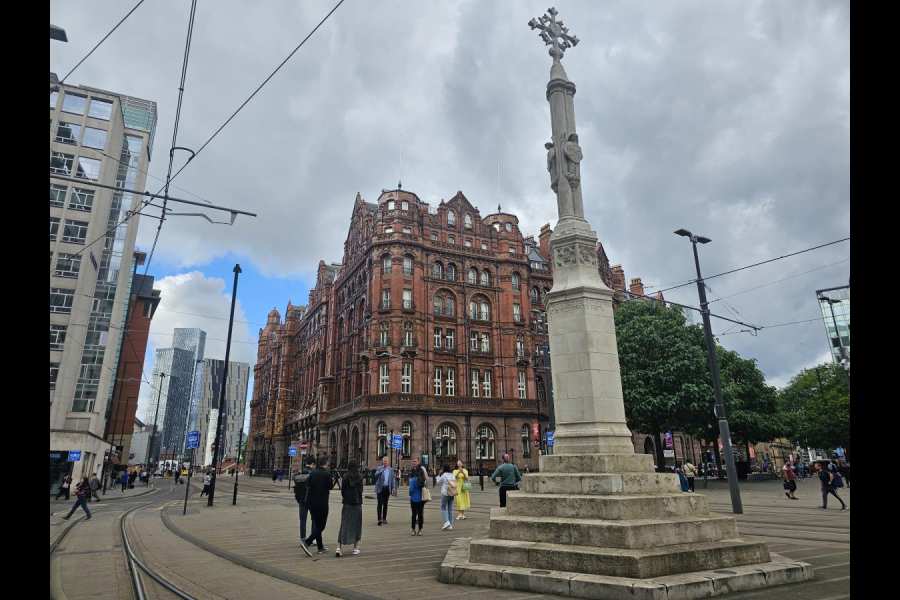If ever there is a city version of Rip Van Winkle waking up from a slumber, it has to be Manchester. With frenetic construction visible in every block at the heart of the city dotted with highrises, all rising in the recent past to claim their space in the skyline, and the rundown quarters getting repurposed, leading to facilities opening every other month, my impression was formed within a day of landing at the airport.
The promise of renaissance is clear in the “strategic plan” enshrined on the Manchester City Council’s website which chronicles the dramatic change since the start of the millennium. “Over the next two decades, it will... grow the population by 40,000 people. And create seven new and distinct neighbourhoods on largely under-utilised and brownfield land…” the plan, formulated in 2016, announces. No wonder it claims Manchester to be “one of the most dynamic centres of Europe”, which seems more true after the pandemic pause.
Indeed, most of the Mancunians t2 encountered in course of our five-day trip turned out to be recent settlers. “The city centre had 500 people in 1990. The number rose to 60,000 in 2019. It is projected to touch 100,000 by 2025,” said an official of Visit Britain, the British tourism agency.
The city that was at the forefront of the Industrial Revolution in the 19th century, christened Cottonopolis for its textile factories, is reclaiming its place in the sun after decades in the doldrums. And for the tourist this means new places to explore, new concept eateries to try out, new places to party in on every visit.
Back in time
My introduction to Manchester took place on board an electric black cab — a mix of tradition and trend, just like the city itself — with the affable John Consterdine at the wheel. The first spot he drove to took us back to 79AD, when Roman soldiers chose the area as the site of a timbre fort called Mamucium. The Romans left Britain in 410. All that stands now is a reconstructed gateway.
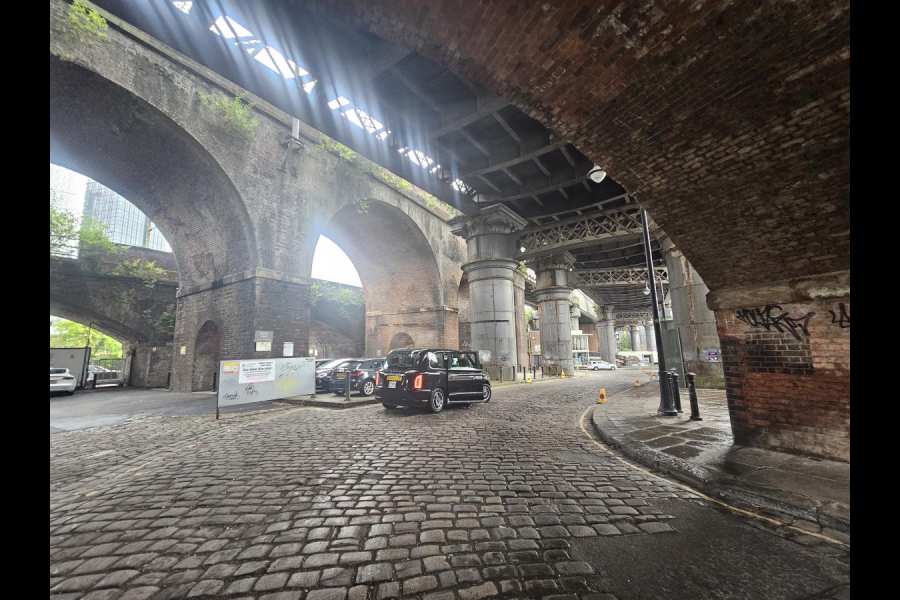
The Chesterfield Viaduct
“Castlefield is where Manchester began,” John said, parking the car under a railway viaduct, which has served as a backdrop in shoots of popular British soaps like Coronation Street and Peaky Binders. In use till 1969, it is now being turned into a sky park with greenery and seats. The viaduct was used by steam locomotives to carry goods into the Great Northern Warehouse. Close by is the Liverpool Road Station, which a blue plaque on the wall declares to be the world’s first passenger railway station that started operation on September 15, 1830.
The warehouses, easily five storeys high, were used to store clothing and accessories made in Manchester — boots and shoes, umbrellas, hats, and small wares like tapes, braids and ribbons. “All this lay as a desolate wasteland after the industrial boom went bust,” John said, driving through the old warehouse district. Today, they are being repurposed as housing blocks, pubs and museums.
“There are 85 breweries in Greater Manchester. Towers are coming up, which are all proposing to run eateries on the rooftop. The city might well start a zipline to connect them,” laughed John.
Cotton chronicle
Back in the day, the railway was not the only connection to bring raw materials to Manchester or send out its products. “The nearest seaport was Liverpool. The local merchants lobbied the Parliament for a canal connection. Thus was born the Manchester Ship Canal in 1894, giving ocean-going ships access to the city,” he said.
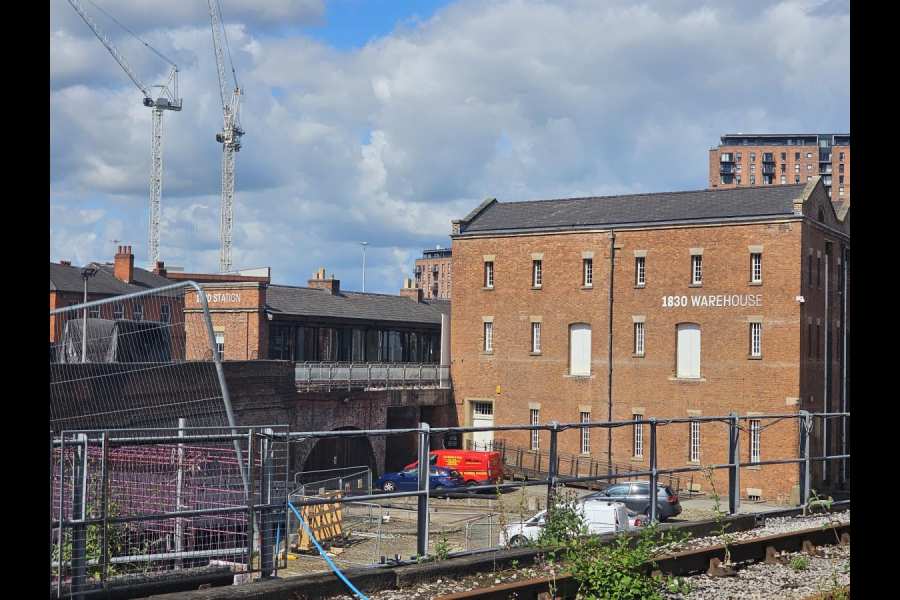
The first passenger rail station and the cotton warehouse behind it on view
So this is how ships brought in raw cotton without tariff from colonised Bengal, a leading producer of both cotton bales and cotton clothes, to feed the Manchester mills and sailed out with readymade clothes to flood the captive Indian market without duties at cheaper rates than swadeshi clothes, which were heavily taxed by the colonial rulers. Thus the British mills established a monopoly over the domestic market in Bengal, ruining local handloom and hosiery industries. Seeing and hearing how Manchester had prospered in the 19th century was like revisiting the school history textbooks which told us the tale from the other side. One could not but feel the irony.
Now the canalside area has been named Salford Quays and hosts Media City, a 200-acre mixed-use property development that has offices of most media houses. “When the BBC moved here, 5,000 jobs moved from London to Manchester,” smiled John.
A sight that caused us surprise and excited our New Yorker group member Elizabeth, was a statue of Abraham Lincoln in a quiet square. Beneath the bronzed sculpture is inscribed a letter from the American president to the people of Manchester, commending them for a historic act of solidarity against the slave trade.
Great Britain, like the rest of Europe, depended on the import of cotton from the pro-slavery Southern states that seceded from the United States in 1861. “As the largest processor of cotton in the world, Manchester took a strong moral and political stance by supporting Lincoln. This measure resulted in a cotton famine, hitting supplies to mills across Lancashire. Sixty per cent of the mills became idle, largely as a result of the blockade,” John explained. No wonder, the British then put more pressure on India to offset the dip in raw materials.
Connected to the textile history was our trip to the Science and Industry Museum the next day, another example of repurposed space. The site of the first passenger rail station and the adjoining warehouses, built to store cotton, is part of the museum that showcases pioneering inventions in Manchester.

A unique working replica of The Baby, the first stored programme electronic computer, at Science and Industry Museum
Greeting a visitor are seven wired contraptions standing at shoulder height. “This is a working replica of the Baby, the world’s first stored-programme computer. The original programme was run at the University of Manchester in 1948, which was enlarged to create the Manchester Mark I computer. Only a few parts survive. This is a unique running replica created on its 50th anniversary,” explained a volunteer.
He asked me to give it a tough sum as a task. The answer to the subtraction took the army of machines in front as much time as it took me to type the long numbers but it came, and accurately so, as affirmed a second later by the calculator in my cellphone. “Meet your ancestor,” I muttered to the smartphone, while crosschecking the answer on it.
We walked through the erstwhile carding room where machines cleaned and combed the cotton. “Wagons pulled by coal-fired steam engines entered the warehouse on rail tracks running from the viaduct directly into the building,” said the volunteer.
So dusty was the place that doctors in the 1820s realised that mill workers were developing breathing problems and sore eyes. Cotton fibres and coal dust in the air were among the reasons why the city was an unhealthy place to reside in, with the wealthy preferring the rural outskirts.
The next morning we went on a walking tour. Stopping in front of the Midland Hotel, our guide shared the anecdote of Charles Rolls and Henry Royce meeting there in 1904, leading to the manufacture of the luxury car in a city flush with funds.
But what struck a more familiar chord was the site of the Peterloo massacre, where in 1819 a pro-democracy reform rally was charged at by a cavalry, killing and injuring many.
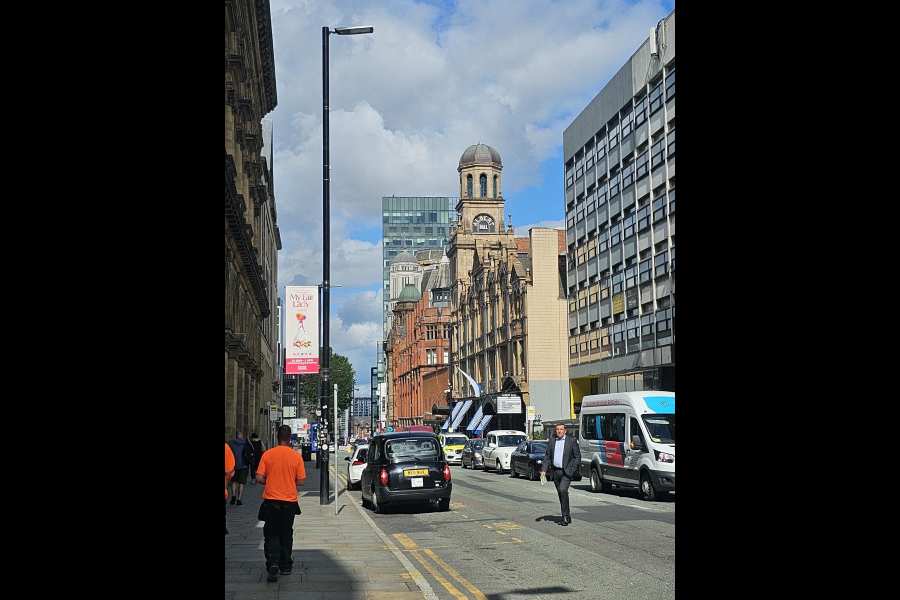
Peter Street, the site of the Peterloo Massacre in 1819
On the same route lay the Free Trade Hall, in front of which Christabel Pankhurst and Annie Kenney staged a protest in 1905, seeking women’s suffrage and were arrested, triggering the Suffragette campaign. A statue of her firebrand mother Emmeline Pankhurst stands close by, in the act of giving a speech.
Next to the Midland Hotel is the imposing Manchester Central Library, which merits a look-in for its neo-classical architecture. The Town Hall next to it is now scaffolded for a £330m renovation. “It is expected to reopen in the summer of 2026,” the guide said.
The University of Manchester is marking its 200th anniversary, tracing its roots to the Mechanics’ Institute of 1824. “It is the largest university campus in the UK and was founded to give the working class a chance to get educated and seek a career away from factory floors,” said the guide.
This is where the nucleus was split by Ernest Rutherford in 1918. Today 300 researchers are working here on graphene, a ground-breaking material 200 times more resistant than steel and five times lighter than aluminum. “We have 25 Nobel Prize winners connected to our history,” a university official said.
Inclusive collection
The university also owns Manchester Museum, not too far away. With a huge skeleton of a sperm whale hanging overhead, one is led to the words of taxidermist Harry Brazenor who is photographed sitting on the skeleton during its installation in 1898.
The gallery, he is quoted as saying, “was designed to fit the length of a whale and the height of a giraffe. (It)… aims to inspire an appreciation of the incredible diversity of life on Earth”.
An exhibition on the Golden Mummies of Egypt was then underway (on till April 14) based on the museum’s Egypt and Sudan collections at the new exhibition hall, created as part of a £15 million transformation. The museum cares for around 100,000 fossils, including one of the most important collections of Ice Age animals in Europe. Its vivarium has recently gifted it a landmark moment in the museum’s history — the captive breeding of the variable harlequin toad, a critically endangered species.
I was drawn to the South Asia Gallery, which was proof that the museum spans time, space as well as identities. Its display, said lead curator Nusrat Ahmed, has been co-curated by a collective of experts from the diaspora who worked through the pandemic years to put the collection together.
There were pictures of Gandhi’s visit to Lancashire in 1931 to see the impact of his boycott of British goods on mill workers who had lost jobs; pages from the notebook of S. Ramanujan, once a student of Trinity College, Cambridge; letters exchanged between Satyendra Nath Bose and Albert Einstein.
There were objects too like pottery shards from the Mohenjodaro excavations, a decorated rickshaw from Bangladesh and an old photograph taken in Calcutta of the friends of artist Michelle Olivier’s mother and her artwork based on that. But the most touching was a panel on Furqan Ali Siddiqui, a trainee surgeon at the Manchester Royal Infirmary who had served Covid patients and succumbed to the disease in the first wave. His personal effects, like mask and NHS identity card, are on display, lending a poignant and personal touch to the collection.
Out in the gardens
An escape into greenery was provided by a trip to the Royal Horticultural Society’s newest garden at Bridgewater, spread over 154 acres. It walks the green talk, offering a 30 per cent discount on entry if one comes by public bus.

Chinese Streamside Gardens at RHS Bridgewater, outside Manchester
There are various lush sections, from the crop-rich kitchen garden to a Chinese streamside garden with jewel border pathways, to explore which one can take guided tours. There is a huge shop for sustainable home decor, processed produce and gardening books, pots and equipment, other than a rich collection of plants.
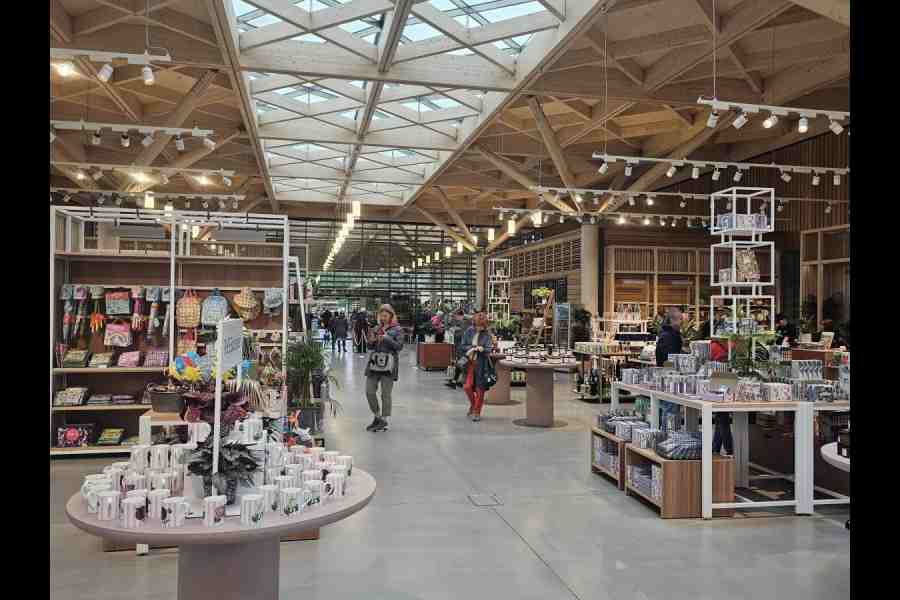
The garden shop at RHS Bridgewater
Lunch at the Bridgewater Café featured simple and tasty dishes cooked with largely their own produce.
Party city
For those who want to live up the nightlife and experiment with food, Manchester is turning out to be just the place. “With thousands of students living close by at the university, Manchester is quite the party city now,” said a Visit Britain official.
Two places stood out among our dining destinations. One was Leno at Diecast. An aluminium diecasting factory and distribution centre, dating back to 1870, is the site for a thrilling addition to Manchester’s culinary landscape that marries grunge with good food.
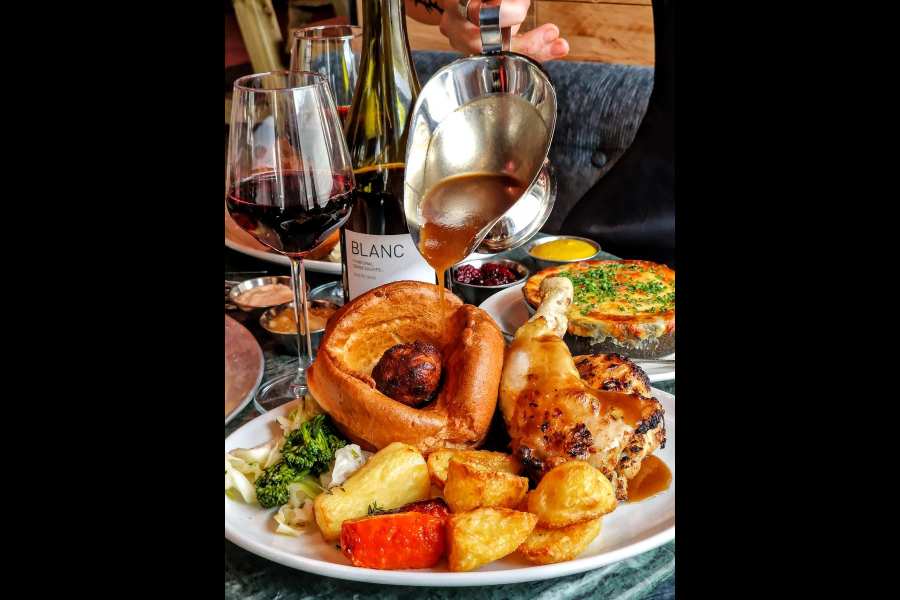
A dish served at Leno, Diecast
The pizzeria served “Neopan” pizzas (a twist on the Neapolitan pie), with enough variety and slices to feed a ravenous reveller group. While caravans serve beer outdoors, one understands why the place is called a “monumental festival of rum” on walking into the central bar. There are 14 giant daiquiri machines pouring out 49 frozen combinations that can keep a party of 5,000 hydrated till late hours. There are live performances every Thursday through Saturday with professional dancers utilising the height of the erstwhile factory ceiling to take their moves a level higher — literally.
The other was Depot Mayfield. A recently renovated railway yard which was used by the Royal Mail as a distribution centre till the 1980s is now a multivendor set-up that can accommodate 10,000 revellers. The building’s industrial heritage has been retained in the concrete floors and exposed brick and metalwork even after a £1 billion regeneration project.
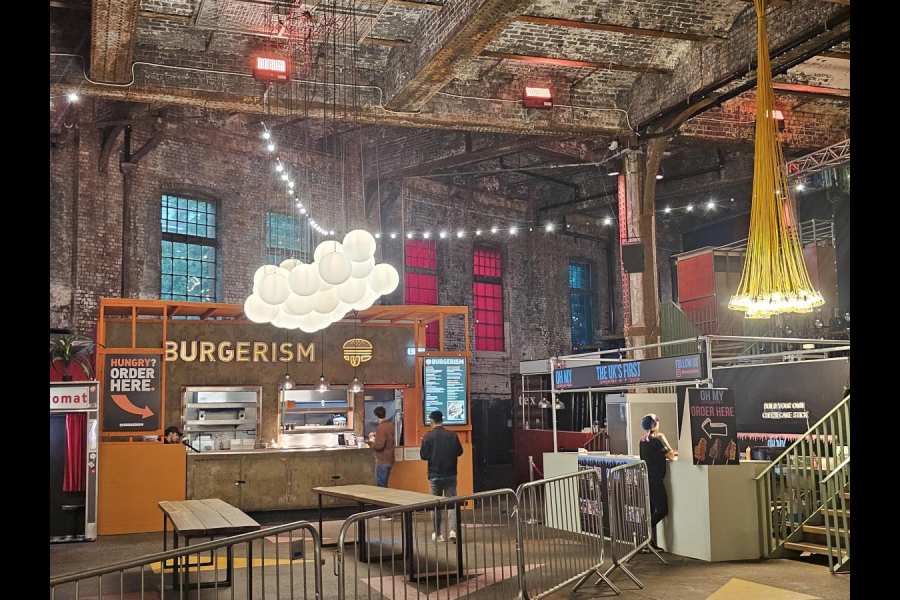
On our last night, we dined at Freight Island inside the depot, with a variety of offerings, from South American and Indian street food to Chinese and Japanese fusion cuisine. Ever tried curry in a pie? Now that’s a dish that will remain in my head with a seasoning of Manchester all over it!P.S: What’s a Manchester trip without a kick of sports? But that story is for some other time.
